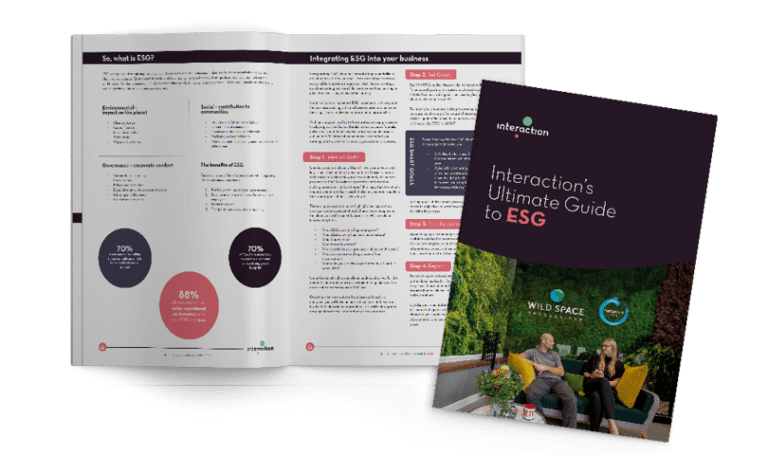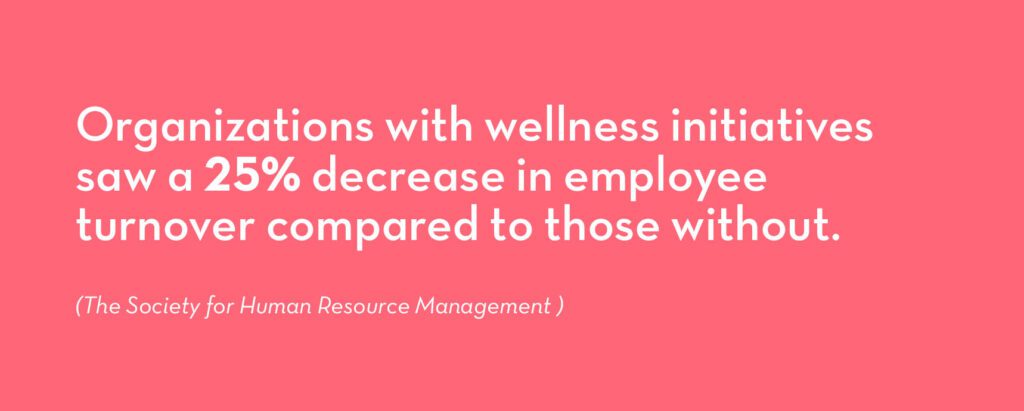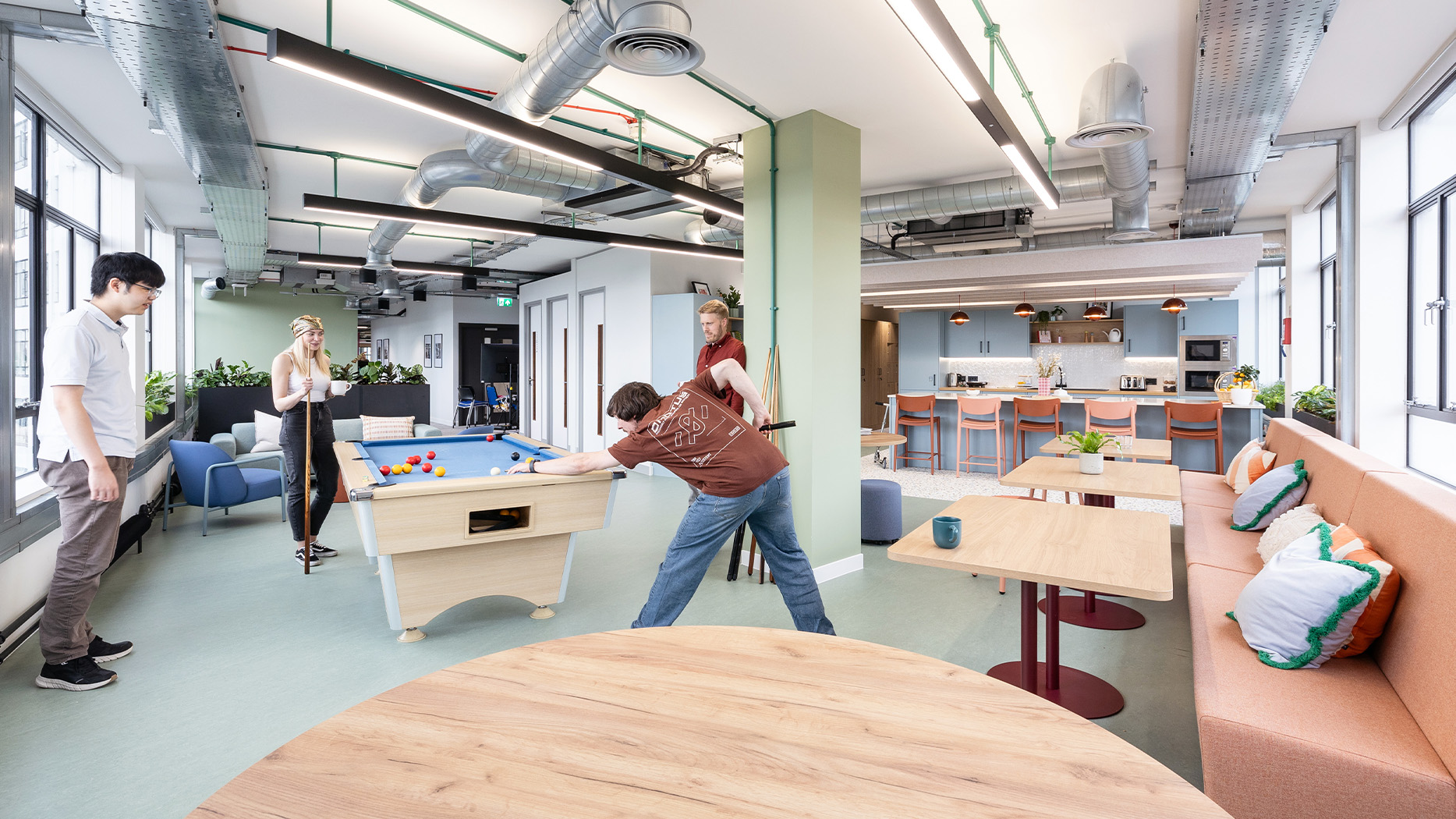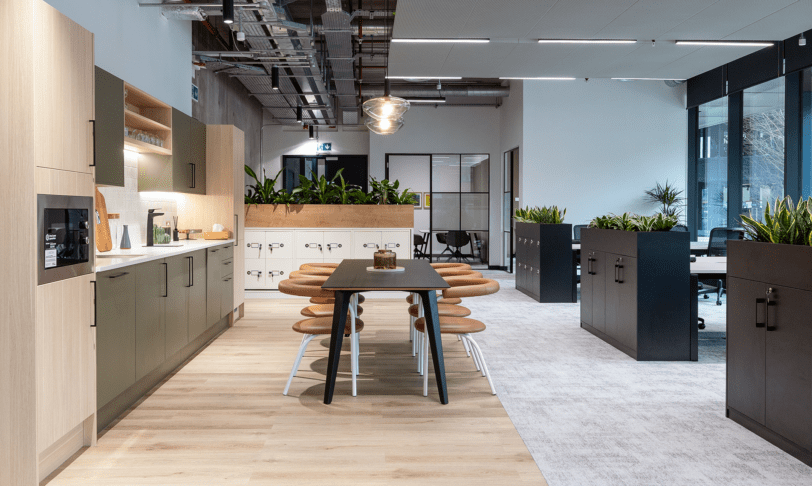How to create a workplace wellbeing strategy
Whether you’re scrolling through LinkedIn or being deluged with ads from the latest uncanny crop of TikTok influencers, the term ‘wellbeing’ seems omnipresent nowadays. While it can often feel like a buzzword, the sentiment should be taken to heart, especially regarding the workplace. Wellbeing permeates all aspects of our lives, and in an area where we spend so much of our time – at work – the need for a positive and healthy environment is integral to our overall happiness.
As we cover in this article, wellbeing isn’t simply about subsidised massages or free smoothies on Friday. It requires an understanding of what people need to feel both seen and supported and practical ways in which businesses can help them – from their working environment to their day-to-day processes. Workplace wellbeing is vital for a thriving organisation, as it is for the individual, and the best way to achieve this is with a solid workplace wellbeing strategy.

Why is it so important to develop a workplace wellbeing strategy?
When employers are genuinely invested in their wellbeing, people will feel more engaged and energised to contribute to a positive organisational culture. A workplace wellbeing strategy is therefore essential for employee engagement and satisfaction. Given that it can also improve productivity and reduce absenteeism, a workplace wellbeing strategy will also help your bottom line. This is confirmed by research from Deloitte into the financial impact of mental health in the workplace (for instance, it is estimated that poor mental health cost UK employers £56bn between 2020 and 2021).

Integration with workplace strategy
Referring to a study by the University of Oxford’s Wellbeing Research Centre, Dr William Fleming said, “There’s growing consensus that organisations have to change the workplace and not just the worker”.
A successful wellbeing strategy should really be an extension of your overall workplace strategy. Instead of treating wellbeing initiatives as standalone programs or ‘nice-to-haves’, they should be integrated into the company’s core values and operational practices. This means addressing systemic issues, fostering a healthy work-life balance, and creating a supportive and inclusive environment for everyone. It requires an involved and ground-up approach, and should not be an afterthought or promise that’s forever on the horizon. By taking this integrative approach, wellbeing becomes a fundamental part of how the organisation operates, leading to sustainable, long-term benefits. It therefore makes sense that the same elements that make a good workplace strategy also make for a robust wellbeing strategy:
- Strategic amenities and people-centric practices that support varied work styles
- Policies that align with your company’s vision, goals, and culture
- A thoughtful layout that facilitates productivity and creative collaboration

ESG: A Guide for Ambitious Businesses
To build the best workplace culture, attract talent and enhance employee wellbeing, get expert insight from our guide to Environment, Social and Governance (ESG).

What types of wellbeing should be addressed in a workplace wellbeing strategy?
As we’ve mentioned before, wellbeing is a broad spectrum – it covers many interconnected facets of our lives. Many people are familiar with what has been described as the ‘7 Types of Wellness’ (Physical, Emotional, Intellectual, Spiritual, Environmental, Social, and Occupational) – which can all be addressed in a workplace wellbeing strategy. Here a just a few examples of the types of wellbeing that can be centralised in a workplace strategy:
Mental wellbeing
Organisations should have an understanding of how mental health affects different people, and provide resources and support. This can include access to counselling services, mental health days, and awareness training for managers to recognise and support employees who may be experiencing difficulties. All of this needs to be promoted as part of a culture where mental health is de-stigmatised, and employees feel they can be honest and approach colleagues or managers if they are struggling. A great example of this is Palo Alto Networks, who successfully promote mental health through various resources via Modern Health, their mental wellness partner. Employees and their families have access to sessions with certified wellbeing coaches, licensed clinical therapists, unlimited live group sessions, guided meditations, $1,000 per year towards wellbeing, and more.
Physical wellbeing
While some companies may offer gym memberships or healthy food options – a wellbeing strategy should take a more holistic approach to physical health. A pioneering example is Bupa who offer nutritional advice and support via an app to their UK employees, to facilitate personal fitness, mindfulness and relaxation goals. An integral part of physical wellbeing is workplace ergonomics – which is fundamental to a safe and productive work environment – and encouraging a healthy work-life balance given the prevalence of stress-related health issues in the workplace.

Social wellbeing
If you want to cultivate a social culture in the workplace, employees should feel encouraged (but not forced) to participate. While creating opportunities for social interaction, such as team-building activities, social events, and collaborative projects, helps build a supportive community, workplace design is equally important. For instance, elements like the flow, amenities and desk setup help to facilitate socialisation and a sense of community.
Financial wellbeing
It’s pretty obvious that financial stress is a significant detriment to wellbeing. While you may wish to consider looking into planning resources and assistant programs, the real solution is to offer competitive pay with regular reviews, introduce financial incentives such as commissions and bonuses, and create an environment where salaries aren’t considered a taboo subject amongst colleagues.
Personal growth
Supporting employees’ personal and professional development is key to maintaining engagement and satisfaction. Foster a culture of improvement, not just for the sake of the bottom line, but so that employees can reach their potential. Offer opportunities for learning and development, so people feel nurtured, fulfilled and empowered to do their best.
Finally, remember that people want to be appreciated and nurtured for who they are as whole individuals – not just workers. Therefore, your workplace strategy should be based on a holistic understanding of wellbeing. After all, so many aspects of our physical, mental, emotional and spiritual wellbeing are interconnected. A holistic wellbeing strategy also ensures that you are being proactive, rather than offering temporary relief from daily stresses – which doesn’t go far enough in acknowledging the varied ways in which the workplace can affect wellbeing.

Steps for creating a workplace wellbeing strategy
A strategy needs to be a continuous plan and process rather than a piecemeal series of stand-alone events or one-off initiatives. Designing and implementing your strategy can take many forms – it depends on how your organisation is structured and what it responds to well. We recommend a cyclical approach based on the following structure:
1. Assess current wellbeing
The first step is knowing what people want and need, so begin by evaluating the current state of play. This can be done through surveys, focus groups, and feedback sessions – provided you’ve created a culture where employees feel safe and encouraged to express themselves authentically (which unfortunately is not the case for many workplaces).
If you’re keen to take things one step further, consider using data analytics and AI to create personalised wellbeing programmes for employees. After all, wellbeing is all about respecting and appreciating people’s individual needs. This type of insight has the potential to anticipate changing needs and behaviours, mitigating the risk of employee burnout and other issues associated with workplace wellbeing.
2. Define wellbeing objectives
Use the results of your assessment to define clear and specific objectives for your wellbeing strategy. These should align with your overall business goals and address the key areas of wellbeing outlined above. For example, putting systems and allowances in place to reduce unnecessary overtime. Decide on metrics and KPIs such as reduced absenteeism or higher levels of productivity.
3. Develop and implement Initiatives
By a committee, person or group (e.g. a Memorandum of Agreement or MOA) can be chosen to take the lead and drive the development and implementation of the objectives. By giving them the responsibility and the needed resources they are empowered to create targeted initiatives that address your defined objectives. Without this type of focus, you’ll likely be expending resources on initiatives that have no tangible or measurable benefit. Make sure these initiatives are practical, accessible, and relevant to your employees – rather than generic solutions – so that people truly feel seen and heard.

4. Communicate the strategy
Clearly communicate the goals, initiatives, and available resources to all employees using all available channels. This allows you to proactively elicit feedback. A workplace wellbeing strategy should be a collaborative process defined through honest and earnest engagement – otherwise, your messaging may miss the mark.
5. Provide training and resources
Equip managers and employees with the tools and knowledge to support their wellbeing. Without resources, a plan hits a dead-end. This can include training on mental health awareness, stress management techniques, and insights into how workplace design can support physical and mental health. Often the difference between healthy pressure and unhealthy stress is the amount of resources available to cope with a given issue.
7. Monitor and adjust
As you implement the plan, regularly monitor the effectiveness of your wellbeing initiatives through surveys, feedback, and key performance indicators (KPIs). Be prepared to adjust your strategy based on this data to continuously improve and adapt. This forms part of the overall culture of wellbeing by keeping a finger on the pulse of employee needs and preferences.

How do you measure the success of a workplace wellbeing strategy?
To ensure your wellbeing strategy is effective, it’s crucial to measure its impact using specific metrics and KPIs. Here are some key areas to focus on:
- Employee Engagement and Satisfaction: It’s all very well and good conducting surveys, but you should also go beyond the formalities to engage with employees on an individual level for more qualitative insights. For granular data, an Employer Net Promoter Score (ePNS score) can provide great insight. This is a scoring system designed to help employers measure employee satisfaction and loyalty.
- Absenteeism and Turnover Rates: Track absenteeism and employee turnover rates. A decrease in these metrics can signify that your wellbeing initiatives are improving employees’ health and satisfaction.
- Productivity and Performance: Measure productivity and performance metrics before, during and after implementing any initiatives. While it’s not always the be-all and end-all of metrics, it is still crucial for measuring the benefits of prioritising workplace wellbeing.
- Work-Life Balance: Monitor indicators of work-life balance such as overtime hours and reported stress levels. A healthier work-life balance is vital and a sign of a successful wellbeing strategy.
Interaction is an office design and fit-out company passionate about creating modern destination offices that centralise wellbeing and embody the key principles of an effective workplace strategy. Keen to find out more? Say hello by scheduling a chat with Charlie our Relationship Manager, signing up for our newsletter or downloading one of our industry whitepapers.



